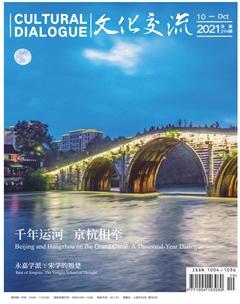千年运河 京杭相牵


自公元前486年吴王夫差开凿邗沟开始,大运河跨越了2500余年历史。它是以物态文化创造出的流动的历史,是人类追求文明、创造财富、推动社会发展的象征。
大运河虽没有长江的豪迈,也没有黄河的伟岸,但它作为中华民族最具代表性的文化标识之一,具有独特的精神内核与历史文化价值,被称为中国人的“父亲河”。
悠悠运河,流淌千年,融通古今。大运河是祖先留给我们的宝贵遗产,如何“保护好、传承好、利用好”大运河,正成为当下中国的重要课题。2019年2月,《大运河文化保护传承利用规划纲要》颁发,同年,首届“中国大运河文化带京杭对话”举行,北京、杭州两地共同推动运河沿线城市结成生态共同体,让运河文化在传承中保持活性、在融合中增添活力。
京杭相牵,更为突出地展示了大运河文化带建设的丰富成就,努力推动着大运河的共建共享,对于带动运河沿线城市发展、推动中国大运河文化带建设具有积极意义。
今年的中国大运河文化带京杭对话主体活动将于10月21日至23日在杭州举行,届时一場多地、多点、多方联动参与运河保护传承利用的共同行动再兴高潮。
Beijing and Hangzhou on the Grand Canal:
A Thousand-Year Dialogue
From its birth in 486 BC to the end of the Qing dynasty (1616-1911), then fast forward right to the present moment, the Grand Canal has spanned over 2,500 years. It is a living history of human civilization, and it is a symbol of mankinds aspiration for civilization, creation of wealth and promotion of social development.
Although it may not be as august as the Yangtze River, or as majestic as the Yellow River, the Grand Canal, as one of the most recognizable cultural icons of the Chinese nation, is affectionately called Chinas “father river” for its unique spiritual symbolism and historic value.
Flowing for thousands of years, the Grand Canal is also an invaluable heritage bequeathed to us by our ancestors. How to better “protect, inherit, utilize” the Grand Canal is an important issue for China to ponder on. In February 2019, the Outline of the Plan for the Protection, Inheritance and Utilization of the Grand Canal Culture was issued, and in the same year, the first “Beijing-Hangzhou Dialogue on the Grand Canal” was held. The cities of Beijing and Hangzhou have joined forces in promoting the creation of a community among the canal cities, to maintain the vitality of the canal culture.
The joining hands of Beijing and Hangzhou has highlighted the rich achievements of the construction of the Grand Canal Cultural Belt, the co-construction and co-sharing of which is of great significance, as it will help drive the development of cities along the canal.

